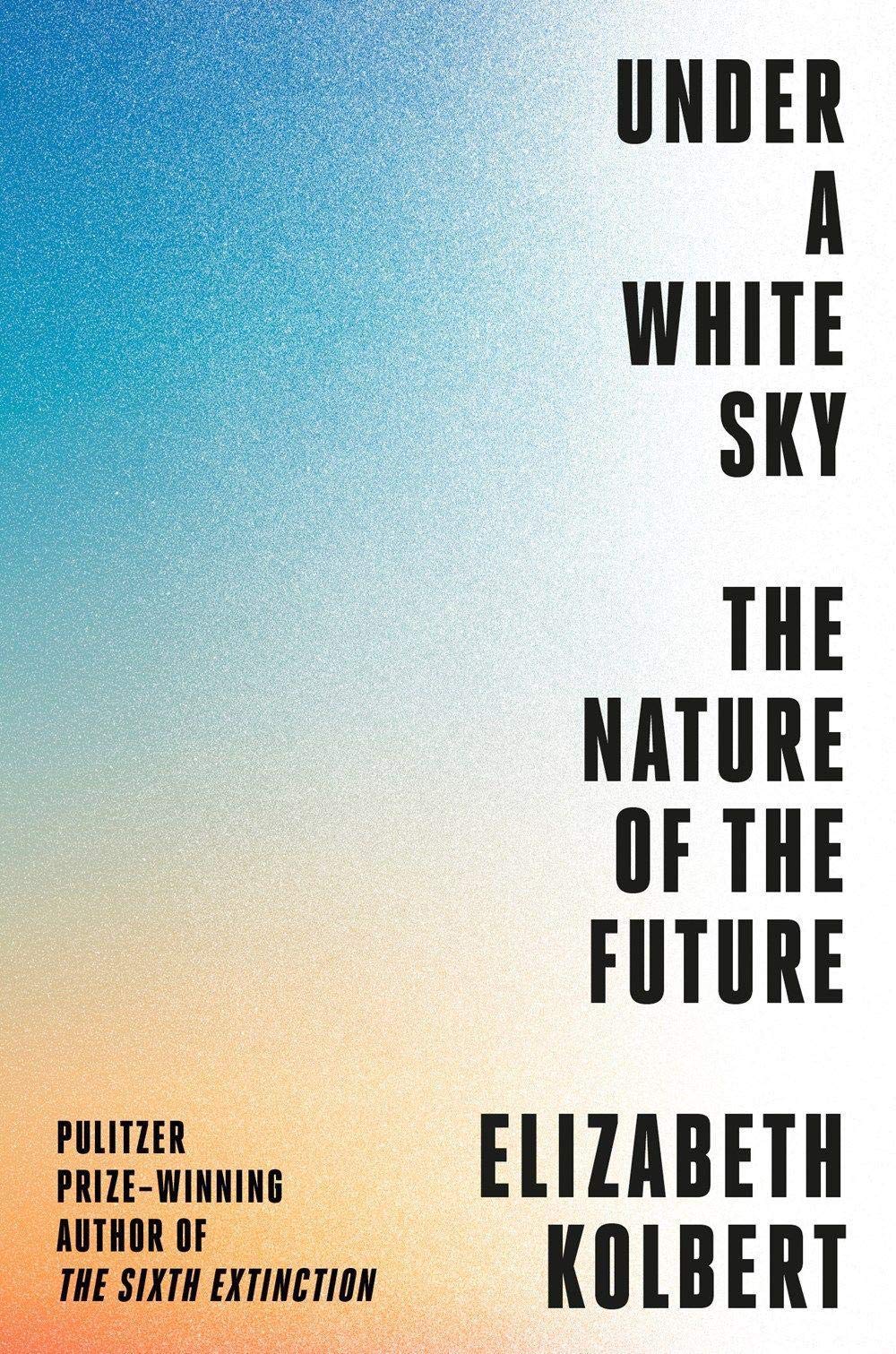A book about the technological solutions currently in development to oppose problems created by the Anthropocene, Under a White Sky, attempts to balance a narrow line between viewing technology as a silver bullet, and critically examining the efforts by scientists to fix our predecessors’ failed solutions.
Mihailo Simic, ESST Master, University of Oslo
Based on the reporting of an experienced and ever-questioning reporter, Elizabeth Kolbert, Under a White Sky attempts to shed light on many of our biggest questions concerning the environment, climate, and our
human impacts on the world around us.

Techno-fatalism and hope-inducing techno-optimism
Experiencing the tumultuous frontlines of research on the environment and our climate, and speaking to engineers and genetic engineers, biologists and microbiologists, atmospheric scientists and atmospheric entrepreneurs, Kolbert takes us on a journey of petrifying techno-fatalism and hope-inducing techno-optimism. As Kolbert herself writes, Under a White Sky is “a book about people trying to solve problems created by people trying to solve problems”.
Kolbert writes with a wry sense of humour, one where the irony of our feeble attempts to correct previous mistakes doesn’t go unnoticed, and where the hopelessness of our situations leads to a sort of perplexed melancholy.
Her book is full of curious wonder, creating an experience where we as readers are on a magic school bus, constantly headed to new destinations with fascinating knowledge inbound.
Nonetheless, it must be said, the book is embedded in a cacophony of interventions and problems; not of the writing itself, but rather the cases and subjects of the book.

Our past, present and future
Trekking from destination to destination, laboratory to field, and from issue to issue, Kolbert provides a discerning look at our past, present and future, and what our control of nature and technologies does and may do.
Starting from the reversal of a river’s flow to change the destination of waste, which affected the hydrology of large parts of the United States, to grander interventions aimed at decreasing biodiversity loss through genetic engineering, or reducing global climate change by geoengineering our planet, Kolbert describes and examines several of the possible solutions on the table, and the story behind it all.
This book brings, at the same time and almost paradoxically, both an immense sense of doom and misery, while purporting an optimistic and futuristic message of belief in science and human ingenuity.
The message of the book is clear; we have created a system of functioning, a paradigm of existence, where the only possible rectifying solution against our undoing, is undoing what we have done and trying to revise our previous, controlling solutions. This involves a fundamental reconceptualization of core ideas: nature and the unnatural, artificial versus real, and the convergence of realists and futurists.
Kolbert manages, in 201 short pages, to ask so many insightful and critical questions, that you are certain to end up introspective and pondering. And you should. What else is there to do, when the issue stops being merely the control of nature, and transitions to control of the control of nature?
Clean, concise and captivating
Elizabeth Kolbert truly breathes life into all the issues she masterfully presents. Her writing is clean, concise and captivating, and the breadth of the topics she covers means that most readers are bound to be enticed by at least some of the cases.
Although the book may be criticized as being slightly constrained due to its contingency on the scientists working on technical solutions, rather than enabling the expression of critics, there should be no misconception; Kolbert herself is highly perceptive and open about the various issues and consequences faced due to human intervention, and clearly conveys the gloomy yet necessarily enthusiastic outlook of the subjects of her book.
Under a White Sky is a book I would recommend to everyone: both the innovators and futurists looking ahead at bright solutions, as well as the philosophers, sociologists and critical thinkers, struggling to reconvene and rethink the dichotomies of human-induced problems and human-controlled technical solutions.
This review was originally published by Teknovatøren, a magazine published by the students of the TIK Centre for Technology, Innovation and Culture – UiO. You can read the magazine for free here:
https://www.teknovatoren.no
Mihailo Simic Foto Privat


